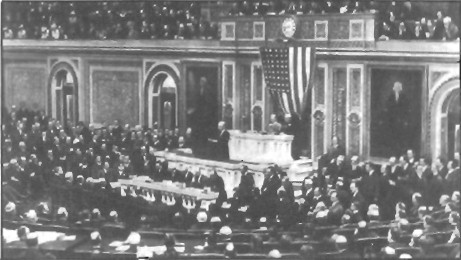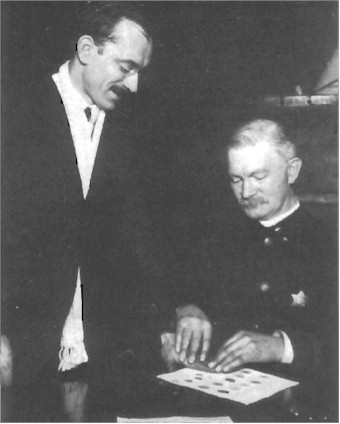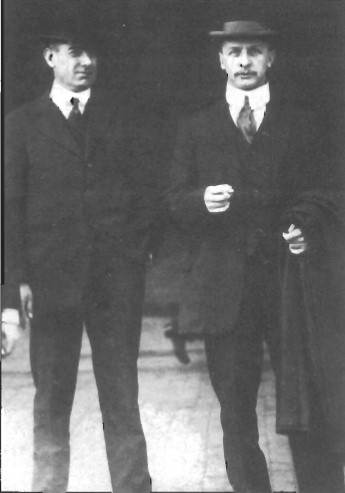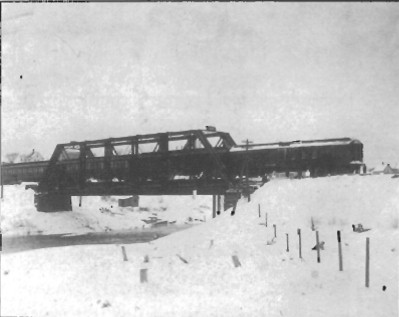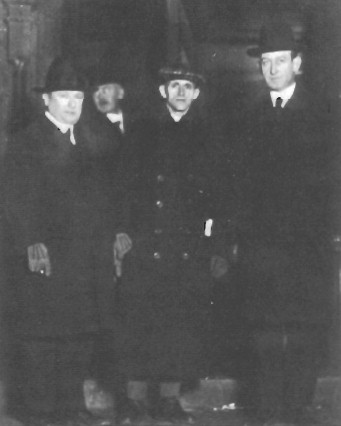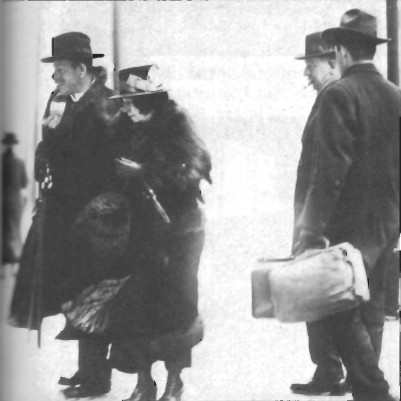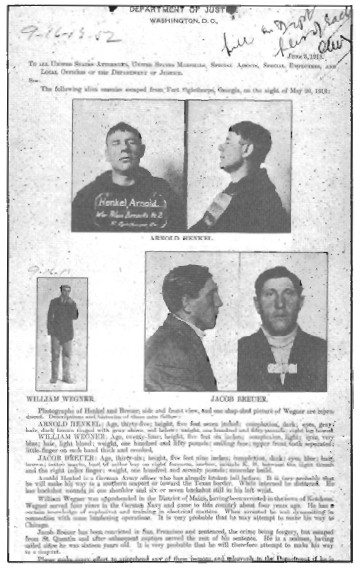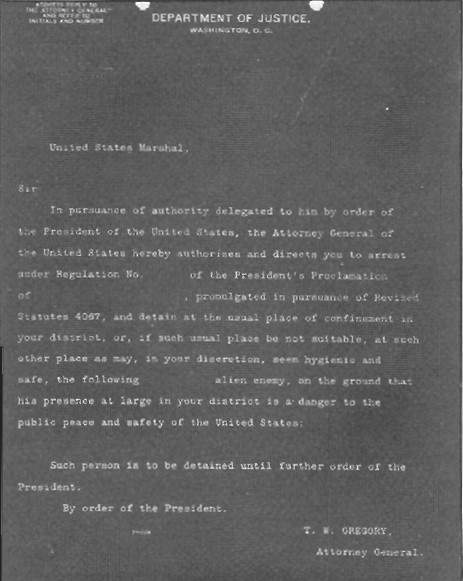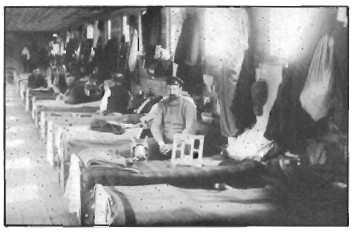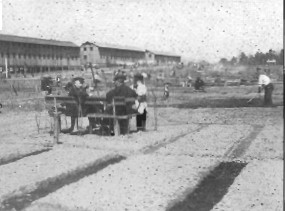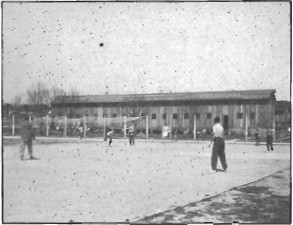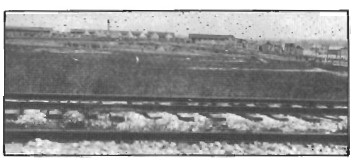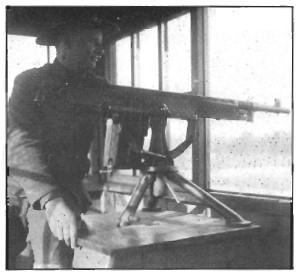| March 27, 1917 |
Cooperate with local police; take precautions against hostile acts. |
| April 6, 1917 |
War declared. Warn Germans to "Obey the law." |
| April 10, 1917 |
Advise Germans to surrender all weapons. explosives, and radios; arrest any who do not. |
| April 16, 1917 |
Arrest specified enemy aliens and turn them over to War Department for internment. |
| April 20, 1917 |
Establish restricted zones around docks, factories, arsenals, etc.; issue passes to specified enemy aliens. |
| May 23, 1917 |
Marshals and their Deputies have sole authority to arrest enemy aliens. |
| May 29, 1917 |
Protect Selective Service centers; arrest draft evaders or those disrupting selective service. |
| June 18, 1917 |
Complete issuance of passes to enter restricted zones and arrest draft resistors by June 30. |
| July 18, 1917 |
Locate possible places of detention for large numbers of enemy aliens. |
| October 8, 1917 |
Arrest military deserters; assist Bureau of Investigation in locating deserters. |
| November 28, 1917 |
Remove all enemy aliens from Washington D.C. and report their arrival in other districts. |
| December 1, 1917 |
Arrest all draft dodgers under new Selective Service regulations. |
| December 17, 1917 |
Apply enemy alien regulations to citizens of Austria-Hungary. |
| December 26, 1917 |
Arrange for registration of all male Germans in cities over 5,000. |
| December 29, 1917 |
Prevent possible sabotage to docks and wharves by putting grates over nearby sewers. |
| December 29, 1917 |
Begin checking reports from paroled enemy aliens. |
| January 5, 1918 |
Compile descriptions of ail enemy aliens arrested. |
| January 5, 1918 |
Arrange registration of all enemy alien males at local police stations and post offices between February 4 and 9. |
| January 12, 1918 |
Assist enemy aliens in finding employment. |
| February 4, 1918 |
Arrest all enemy aliens discharged from American military and recommended for detention by military. |
| April 6, 1918 |
Locate enemy aliens who fail to register. |
| April 15, 1918 |
Arrest deserters and draft dodgers under new general orders from War Department. |
| April 25, 1918 |
Register female enemy aliens. |
| May 6, 1918 |
Apply all enemy alien regulations to females. |
| June 19, 1918 |
Arrange for speedier transfer of enemy aliens arrested by local police to Marshals. |
| September 19, 1918 |
Prohibit enemy alien females from restricted areas unless given a pass by Marshal. |
| November 11, 1918 |
Armistice declared. |
| December 25, 1918 |
Regulations on enemy aliens lifted. |
